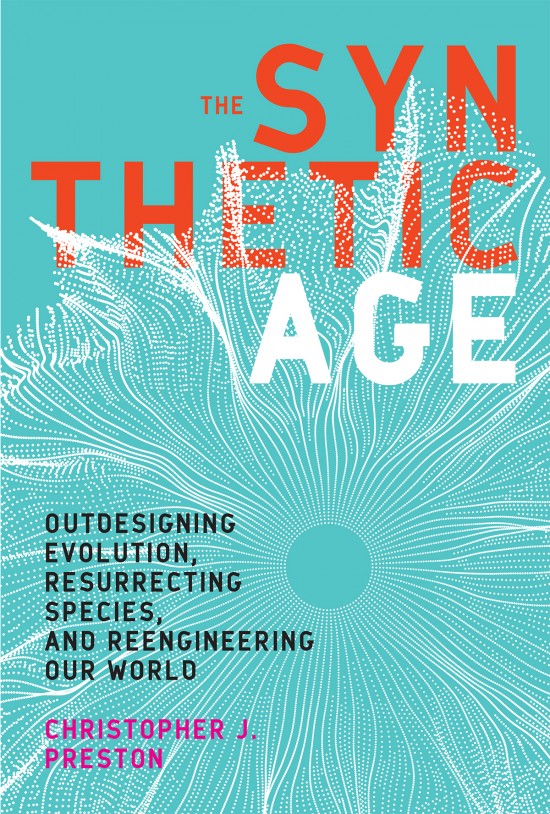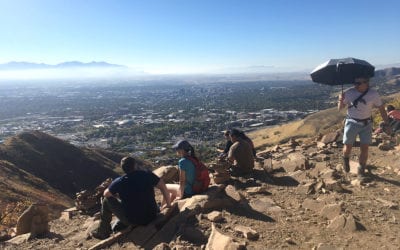Book Review
Patrick Kelly, Media and Book Review Editor
Wilderness Digest
December 2019 | Volume 25, Number 3
The Synthetic Age: Outdesigning Evolution, Resurrecting Species, and Reengineering our World
by Christopher J. Preston. 2018. MIT Press. 224 pp. $15.95 CAD/USD (pb)

In The Synthetic Age, philosopher and ethicist Christopher Preston offers readers a glimpse into a rapidly approaching future of unprecedented human control, design, and manipulation of our planet and its natural processes. Preston introduces us to a dizzying array of emerging technologies that promise to fundamentally remake and reorder the natural world. As we leave the Holocene epoch behind and enter the Synthetic Age, the distinction between the artificial and the natural is set to vanish entirely. Preston urges us to recognize that by endeavoring to intentionally remake and reshape the biosphere, we threaten to upend the core assumptions that ground our moral relationship to the natural world. At this pivotal moment of unprecedented transition, we are asked to take a step back and carefully consider how far we ought to go in remaking the Earth.
The book proceeds through 11 well-researched chapters, with each devoted to explaining one of several new technologies and accompanying ideologies poised to subsume the biosphere under the technosphere. Detailing advances in nanotechnology, synthetic biology, de-extinction, and climate engineering, Preston paints a vivid picture of a not-so-distant future that is both awe inspiring and deeply unsettling. In terms of implications for wilderness management, Preston’s exploration of ecosystem engineering (Chapter 5) is most directly germane.
After first recounting familiar critiques of the wilderness idea (i.e the pristine myth and the privileging of untouched nature), Preston details a new strain of environmentalism that rejects both the moral and practical relevance of wilderness and wildness in the 21st century. If, as thinkers such as Emma Marris claim, untouched, wild nature no longer exists, then environmentalism has to be “less about preserving and more about shaping” the natural world, including those areas protected as wilderness (p. 70).
This pushback against the wilderness idea in favor of active management has been well documented by previous authors. What makes Preston’s exploration unique is the context within which he discusses it. While detailing a host of technological advancements, Preston is careful to point out that each may have potentially powerful conservation applications that include wilderness management. As a staunch supporter of the wilderness idea, I was surprised to find myself tempted when the prospect of rescuing bull trout or whitebark pine from climate change (via genetic alteration) was dangled before me. While I stopped far short of endorsing such a thing, especially within wilderness, I was forced into the uncomfortable position of trying to balance my deep concern for struggling species with my strong valuation of wild, untrammeled landscapes.
What kinds of new technological tools, if any, will wilderness managers opt for when facing down the one-two punch of an extinction crisis and climate change? Does it make sense to continue with an uncompromising, hands-off approach to wilderness? These are admittedly heretical questions. However, the strength of Preston’s book rests precisely in getting us to ask these kinds of questions. He does so not as a provocateur simply looking to ruffle feathers but rather as someone clearly concerned about a coming future where our most cherished environmental values will be seriously challenged. Rather than be left scrambling to find our ethical bearings in a world changing at lightning speed, Preston’s book offers us a chance to stop, think, and hopefully decide what sort of future we desire.
Reviewed by PATRICK KELLY, IJW media and book review editor; email: patrick1kelly@umconnect.umt.edu.
Read Next
Young Activists: Influencing the Climate Change Movement
As 2019 closes, it is noteworthy to recognize the influence and impact of Greta Thunberg, the Swedish climate activist.
The Cognitive Costs of Distracted Hiking
What do smartphones, global positioning systems, Spot Locator Beacons, navigation apps, and other technological innovations mean for the future of outdoor recreation, and, especially, the future of wilderness?
Second Class Wilderness: Separate but Unequal Air Resources in American Wilderness
The United States has a long history throughout which equitable access to resources has been denied to segments of the population along racial, ethnic, and socioeconomic distinctions through informal, legal, and sometimes violent means.



